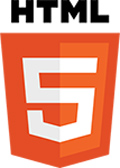
Programming in HTML 5 courses
- Programming in HTML5 with JavaScript and CSS
Sorry, we currently do not have any public courses scheduled for the Programming in HTML 5 level 1 course. Please contact us to see if we can put one on the schedule for you
Sorry, we currently do not have any public courses scheduled for the Programming in HTML 5 level 1 course. Please contact us to see if we can put one on the schedule for you
Programming in HTML5 with JavaScript and CSS
Course Description
This Programming in HTML5 with JavaScript and CSS3 course provides an introduction to HTML5, CSS3, and JavaScript. This course helps students gain basic HTML5/CSS3/JavaScript programming skills. This course is an entry point into both the Web application and Windows Store apps training paths. The course focuses on using HTML5/CSS3/JavaScript to implement programming logic, define and use variables, perform looping and branching, develop user interfaces, capture and validate user input, store data, and create well-structured applications. The lab scenarios in this course are selected to support and demonstrate the structure of various application scenarios. They are intended to focus on the principals and coding components/structures that are used to establish an HTML5 software application. This course uses Visual Studio 2012, running on Windows 8.
Target Audience
The course is intended for developers who have at least six months of professional experience and who are interested in developing applications using HTML5 with JavaScript and CSS3 (either Windows Store apps or IE10 apps for the Web). While the students may have little or no HTML5 coding experience, they should have some experience with HTML4. Students choosing to attend this course without a developer background should pay special attention to the training prerequisites. Developers who have more than 5 years programming experience may find that portions of this training are fundamental in nature when presenting the syntax associated with certain programming tasks. Individuals who are interested in taking exam 70-480: Programming in HTML5 with JavaScript and CSS3, can also attend this course.
Prerequisites
Web Development Fundamentals
Programming in HTML5 with JavaScript and CSS
Course Outlines
Module 1: Overview of HTML and CSS
This module provides an overview of HTML and CSS, and describes how to use Visual Studio 2012 to build a Web application.
Lessons:
Module 2: Creating and Styling HTML5 Pages
This module describes the new features of HTML5, and explains how to create and style HTML5 pages.
Lessons:
Module 3: Introduction to JavaScript
This module provides an introduction to the JavaScript language, and shows how to use JavaScript to add interactivity to HTML5 pages.
Lessons:
Module 4: Creating Forms to Collect Data and Validate User Input
This module describes the new input types available with HTML5, and explains how to create forms to collect and validate user input by using the new HTML5 attributes and JavaScript code.
Lessons:
Module 5: Communicating with a Remote Data Source
This module describes how to send and receive data to and from a remote data source by using an XMLHTTPRequest object and by performing jQuery AJAX operations.
Lessons:
Module 6: Styling HTML5 by Using CSS3
This module describes how to style HTML5 pages and elements by using the new features available in CSS3.
Lessons:
Module 7: Creating Objects and Methods by Using JavaScript
This module explains how to write well-structured and easily-maintainable JavaScript code, and how to apply object-oriented principles to JavaScript code in a Web application.
Lessons:
Module 8: Creating Interactive Pages using HTML5 APIs
This module describes how to use some common HTML5 APIs to add interactive features to a Web application. This module also explains how to debug and profile a Web application.
Lessons:
Module 9: Adding Offline Support to Web Applications
This module describes how to add offline support to a Web application, to enable the application to continue functioning in a user's browser even if the browser is disconnected from the network.
Lessons:
Module 10: Implementing an Adaptive User Interface
This module describes how to create HTML5 pages that can dynamically detect and adapt to different devices and form factors.
Lessons:
Module 11: Creating Advanced Graphics
This module describes how to create advanced graphics for an HTML5 Web application by using a Canvas element, and by using Scalable Vector Graphics.
Lessons:
Module 12: Animating the User Interface
This module describes how to enhance the user experience in an HTML5 Web application by adding animations.
Lessons:
Module 13: Implementing Real-Time Communications by Using Web Sockets
This module explains how to use Web Sockets to transmit and receive data between an HTML5 Web application and a server.
Lessons:
Module 14: Creating a Web Worker Process
This module describes how to use Web Worker Processes to perform long-running operations asynchronously and improve the responsiveness of an HTML5 Web application.
Lessons:
Our goal is to make sure your training meets your objectives, not ours. Therefore, all of our outlines are used as guidelines for particular courses. This outline does not guarantee that all the topics listed will be covered in the time allowed. The amount of material covered is based on the skill level of the student audience. We may change or alter course topics to best suit the classroom situation.
Sorry, we currently do not have any public courses scheduled for the Programming in HTML 5 level 2 course. Please contact us to see if we can put one on the schedule for you
Sorry, we currently do not have any public courses scheduled for the Programming in HTML 5 level 2 course. Please contact us to see if we can put one on the schedule for you
Sorry, we currently do not have any public courses scheduled for the Programming in HTML 5 level 2 course. Please contact us to see if we can put one on the schedule for you
Sorry, we currently do not have any public courses scheduled for the Programming in HTML 5 level 3 course. Please contact us to see if we can put one on the schedule for you


